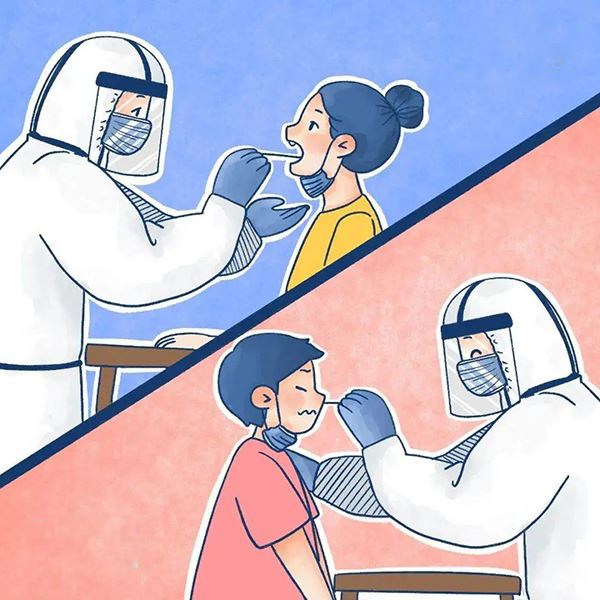Pharyngeal swab is a detection method to understand the patient’s condition, oral mucosa and pharynx infection. The pharynx may be infected by the body’s systemic or local resistance and other external factors, which can lead to diseases. Pharyngeal swabs take secretions from the pharynx and tonsils for bacterial culture or virus isolation, so as to understand the patient’s condition.
Throat swab sampling process:
1. Instruct the patient to open the mouth at room temperature to fully expose the throat, and use a cotton swab to twist lightly on the uvula, pharyngeal arch or tonsil, and try to get as much secretion as possible.
2. The cotton swab should be inoculated immediately after collecting the specimen. If it cannot be inoculated immediately, it should be placed in the throat swab to transfer the inoculation and culture as soon as possible.

Precautions for collection of throat swab specimens
1. It should be collected before antibiotic treatment.
2. A few hours before the specimen is taken, it is not allowed to rinse the mouth with disinfectant or smear the local lesion.
3. Observe the location of the lesion before collecting specimens. Collect the lesions carefully, quickly and accurately, avoid touching the tongue and oral mucosa to prevent contamination.
4. When diphtheria is suspected, the diseased tissue (pseudomembrane) should be collected from the larynx.
5. When collecting tonsil specimens, suppurative spots should be selected. If there is no obvious suppurative spot, but the redness and swelling are obvious, collect secretions from the fossa.
6. Take precautions when collecting specimens to prevent infection.
7. It is advisable to collect it before eating after getting up in the morning to avoid the influence of eating.
8. When the pharynx is slightly uncomfortable, there is no obvious redness and swelling, and there are many follicles, it is mostly viral pharyngitis, which is not suitable for throat swab culture.
9. Fill in the application form correctly: In addition to the basic information of the patient, the application form should also indicate the patient’s clinical diagnosis, symptoms, whether antibacterial drugs have been used, and the purpose of the test, as well as the time of specimen collection.
10. Specimen submission: throat swab specimens should be submitted within half an hour to avoid dryness due to long submission time. It is best to use a transport medium with moisture retention function. Even if a transport medium is used, it should not be stored at room temperature for more than 24 hours.

















